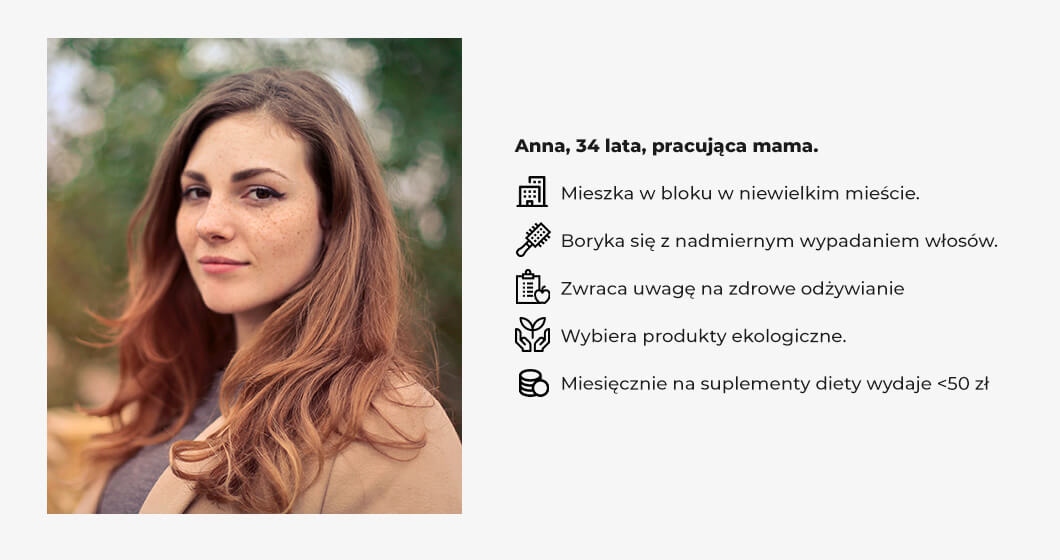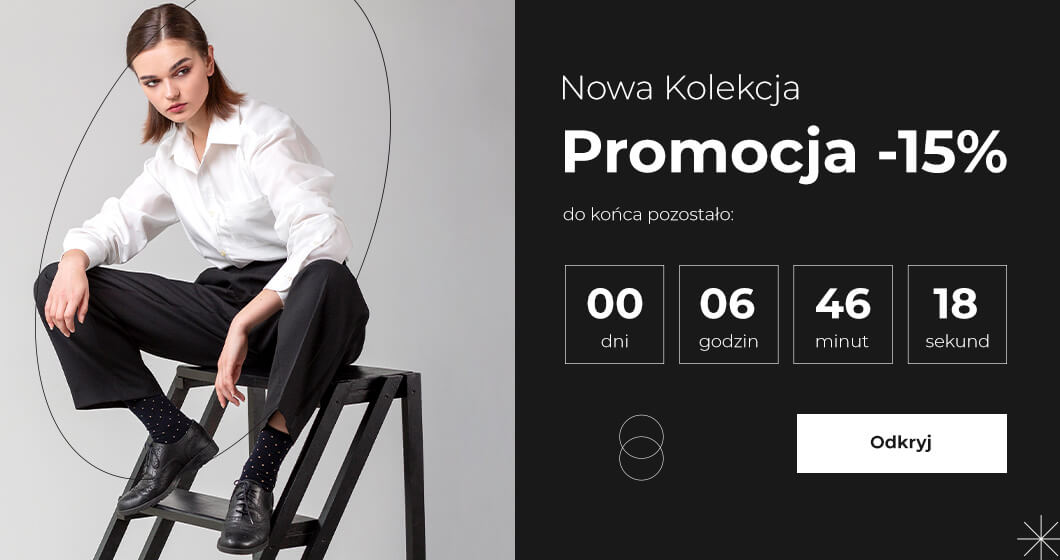
5 powodów porzucania koszyków w Twoim sklepie i 5 rozwiązań, by temu zaradzić
Czy kiedykolwiek robiłeś zakupy online i dodałeś przedmioty do koszyka, tylko po to, by…
12 sierpnia 2022

Wielu przedsiębiorców zadaje sobie pytanie: jak zwiększyć sprzedaż w swoim sklepie online. Nic dziwnego, sprzedaż to w końcu naczelny cel biznesowy.
Na samym początku upewnij się jednak, że Twoje cele są mierzalne (np. sprzedaż wszystkich, bądź wybranych produktów, zdobycie subskrybentów itp.), a także, czy Twój Google Analytics jest poprawnie skonfigurowany i może te cele śledzić.
Następnie porzuć swoje opinie i przekonania. Ludzie często podejmują decyzje opierając się na własnej intuicji, tymczasem ile ludzi tyle opinii. Nie podejmuj decyzji na ślepo, skup się na marketingu opartym na dowodach.
Persona to profil modelowego klienta, wirtualny przedstawiciel grupy docelowej. Określasz, kim może być Twój klient. Spróbuj wskazać takie informacje jak wiek i płeć, zachowania, działania oraz tendencje i upodobania. Chodzi o to, by wiedzieć komu sprzedajesz, żeby jak najlepiej dopasować poszczególne działania.

Dzięki temu, że wiesz już kim są Twoi klienci, możesz łatwiej kierować do nich treści. Sprzedawanie ludziom rzeczy, których nie chcą lub nie potrzebują jest praktycznie niemożliwe.
To co ładne sprzedaje się lepiej niż brzydkie. Zasada jest prosta. Jeśli Twoja strona wygląda przestarzałe i mało atrakcyjnie – masz problem. Klienci ofertę Twojej marki mogą postrzegać jako nieaktualną.
Projekt Twojej strony pełni również ważną rolę komunikacyjną. Użytkownik ma wiedzieć, co jest ważne i jakie kroki powinien przejść aby dokonać zakupu. Odpowiada za to hierarchia wizualna.
Nie sugeruj się tym, że według Ciebie strona wygląda dobrze. Ona ma się podobać przede wszystkim Twoim odbiorcom. Tę zasadę musisz mieć zawsze z tyłu głowy. Jeżeli już posiadasz sklep internetowy, warto wykonać zewnętrzny audyt, który wskaże jej najsłabsze punkty oraz wytyczy kierunek koniecznych zmian.
Propozycja wartości to obietnica, powód, dla którego Twój klient ma kupić właśnie od Ciebie. Potencjalni klienci muszą znać korzyści płynące z Twojego produktu/usługi, jeśli mają coś kupić.
Najlepsze propozycje wartości to takie, które rozwiązują problem użytkownika.
Propozycja wartości powinna być pierwszą rzeczą dostrzegalną przez użytkowników na stronie głównej i wszystkim możliwych stronach wejścia.
Klienci dzielą się na 3 grupy:
1. Mają problem, potrzebę ale o tym nie wiedzą
2. Mają problem, potrzebę, wiedzą o tym, badają różne opcje – porównują oferty zakupowe
3. Są zdecydowani na zakup
Pierwsza grupa jest najtrudniejsza, ponieważ najpierw najpierw trzeba jej uzmysłowić, że ma problem. Ten proces będzie trwał stosunkowo długo. Dlatego skup się na pozostałych.
Największa jest druga grupa poszukiwaczy. Tutaj dużą rolę odgrywa to, czy masz unikalną wartość aby wygrać z konkurencją. Jeśli jej nie masz, klienci wybiorą na podstawie ceny. Musisz prezentować swoje zalety na stronie głównej oraz na stronach produktów, zebrać całą uwagę użytkownika oraz wyraźnie komunikować tę wartość dodaną.
Trzecia grupa jest już zdecydowana i potrzebuje tylko odpowiedniego pokierowania. Dobrze zaprojektowane CTA (Call To Action) i UX robi robotę.

Ale o co w sumie chodzi? Otóż o to, że ludzie niechętnie wydają swoje ciężko zarobione pieniądze, a Ty musisz zminimalizować ich wszelkie wahania, wątpliwości i lęki.
Klient musi wiedzieć, czy to jest warte swojej ceny? Czy może zaufać Tobie jako sprzedawcy? Czy płatności są bezpieczne? Czy dostanie towar na czas? Czy jest on wysokiej jakości? Na te i inne pytania musisz odpowiedzieć na stronach swojego sklepu, umieścić w łatwo dostępnych miejscach i odpowiednio komunikować.
Wszystko musi być jasne i przejrzyste. Nie tylko nawigacja, ale i treści. Klienci muszą Cię rozumieć – nie potrzebujesz wcale wielkich słów ani kwiecistego języka. Klient ma się poczuć dobrze przy Tobie i Twojej marce. Sprawienie, aby tak się stało należy w dużej mierze do copywriterów.
Ścieżka zakupu to bardzo delikatna sprawa i należy projektować ją z uwzględnieniem odpowiednich zasad. Między innymi nie rozpraszać uwagi użytkownika zbędnymi elementami, kiedy on już kupuje. W końcu zależy nam by kupił, a nie, żeby w międzyczasie przeniósł się na facebook i stracił zapał, albo co gorsza, kupił u konkurencji…

Wielu użytkowników wchodzi i wychodzi na Twoją stronę nie wykonując dodatkowej aktywności. Zdarza się, że przeglądają i wybierają produkty, ale nie finalizują zakupu.
Spójrz na fazy kupowania, oni się jeszcze nie zdecydowali. Co możesz więc zrobić? Zaangażuj ich i zbierz adresy e-mail byś mógł z nimi rozmawiać i przekonać do zakupu, sprawić by Cię polubili.
Z reguły im droższy produkt tym więcej czasu klient potrzebuje na podjęcie decyzji.

Nic tak nie motywuje jak czas, a dokładniej jego brak. Wprowadzasz promocję? Wskazuj ograniczenia czasowe, ile zostało do końca promocji. Produktów jest niewiele? Wskaż, że zostały ostatnie 3 sztuki! Presja czasu i poczucie niedostępności to znakomite mobilizatory.

Poza tym, że witryna powinna być ładna i przyciągać uwagę, musi być też użyteczna. Nie staraj się na siłę wprowadzać innowacji, wymyślać rozwiązań…Użytkownicy nie chcą się uczyć obsługi sklepów czy stron internetowych na nowo.
Jeżeli masz wrażenie, że Twój sklep spełnia powyższe wymogi, a mimo to nadal nie sprzedaje, być może warto się skonsultować z zespołem specjalistów. Przyczyn niskiej sprzedaży jest na tyle dużo, że najlepszym rozwiązaniem może być kompleksowy audyt sklepu.

5 powodów porzucania koszyków w Twoim sklepie i 5 rozwiązań, by temu zaradzić
Czy kiedykolwiek robiłeś zakupy online i dodałeś przedmioty do koszyka, tylko po to, by…

Akcje świąteczne, które zwiększą sprzedaż w Twoim e-commerce
Okres Świąt Bożego Narodzenia to wyjątkowy czas w roku, w którym odczuwamy szczególnie magiczną…

10 błędów Black Friday, które rujnują Twój biznes
Black Friday to nie tylko wyjątkowa okazja dla konsumentów, ale również wyzwanie dla właścicieli…